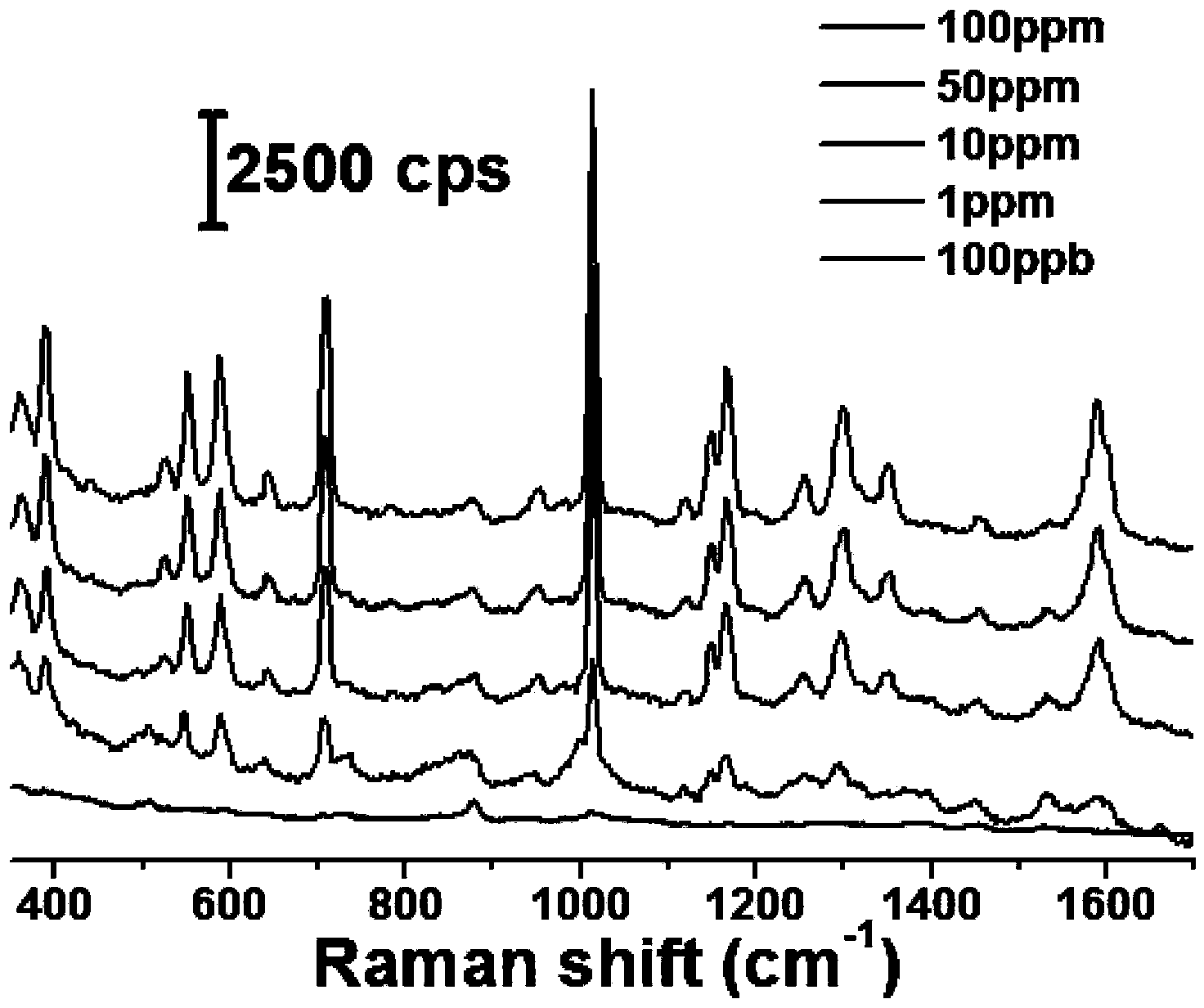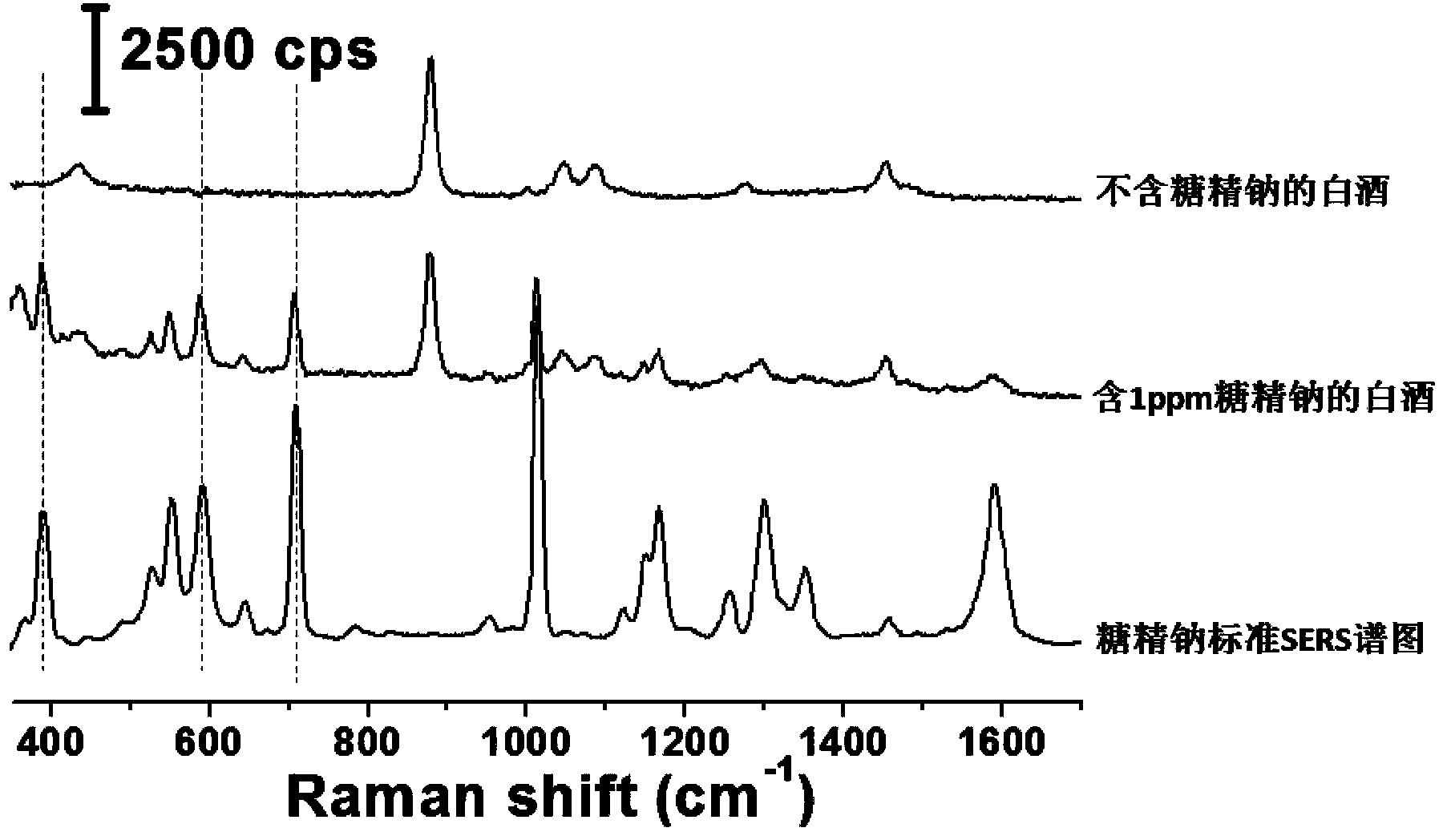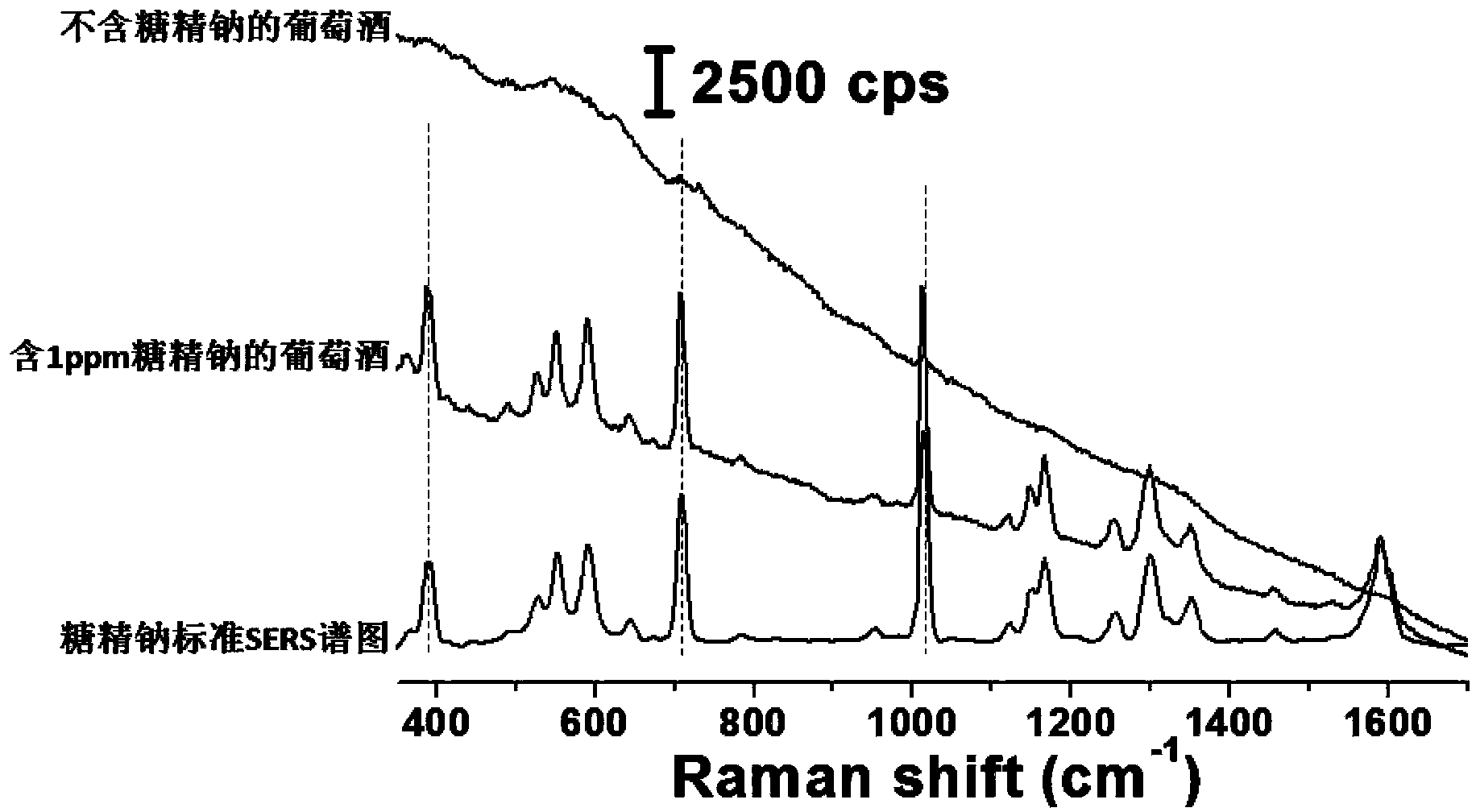Rapid detection method for sodium saccharin in wine product
A detection method, the technology of sodium saccharin, applied in Raman scattering, material excitation analysis, etc., can solve the problems of complicated and time-consuming operation, high detection cost, and long detection time, and achieve low detection cost, rapid detection, and fast detection speed Effect
- Summary
- Abstract
- Description
- Claims
- Application Information
AI Technical Summary
Problems solved by technology
Method used
Image
Examples
Embodiment 155
[0029] The preparation of embodiment 155nm Au
[0030] Take 200mL of a 0.01% aqueous solution of chloroauric acid in a 250mL round bottom flask, heat it to boiling under reflux under magnetic stirring, then quickly add 1.4mL of a 1% aqueous solution of sodium citrate, and the solution will change within half a minute. black, continue to reflux heating for 40min, the solution gradually changes from light yellow to brownish red, let it completely react and then naturally cool to room temperature to obtain a gold nanoparticle sol with a diameter of about 55 ± 10nm.
Embodiment 2
[0032] Preparation of sodium saccharin standard solution:
[0033] Take 0.1000g of sodium saccharin (manufacturer, purity), dissolve it, and set the volume in a 100ml volumetric flask. This is 1000ppm sodium saccharin standard solution.
[0034] Preparation of sodium saccharin standard solution: According to the previously prepared 1000ppm sodium saccharin standard solution, prepare 100ppm, 50ppm, 10ppm, 1ppm, 100ppb sodium saccharin standard solution.
[0035] Centrifugal concentration of 55nm Au (Citrate sodium):
[0036] Sonicate 55nm Au for 5min, mix well, take 1.5ml sol in a 1.5ml plastic centrifuge tube, and centrifuge (8000rmp / min, 5min). Remove the supernatant and keep about 10ul of the sol.
Embodiment 3
[0037] Sodium saccharin detection in embodiment 3 liquor
[0038] A certain brand of white wine purchased in the market has been tested by other methods to contain no sodium saccharin
[0039] Set up a control group (blank)
[0040] 1. Sodium saccharin group (add sodium saccharin solution to blank liquor to make it contain 1ppm sodium saccharin)
[0041] 1. Instrument: Bitek portable Raman spectrometer, laser wavelength 785nm, power 280mW.
[0042] 2. Use a 200ul pipette gun (manufacturer) to extract 200ul of the test solution and mix it with 10ul of 55nm Au (the color of the sol turns black) and place it in a detachable microplate. Focus the laser focus on the surface of the object to be measured, and then start to collect spectra. The time for collecting spectra is 1s, the number of averages is 1, and the number of accumulations is 1. (Note: This process needs to be quick).
[0043] Note: The entire operation above was performed at room temperature.
[0044] See the tes...
PUM
 Login to View More
Login to View More Abstract
Description
Claims
Application Information
 Login to View More
Login to View More - R&D
- Intellectual Property
- Life Sciences
- Materials
- Tech Scout
- Unparalleled Data Quality
- Higher Quality Content
- 60% Fewer Hallucinations
Browse by: Latest US Patents, China's latest patents, Technical Efficacy Thesaurus, Application Domain, Technology Topic, Popular Technical Reports.
© 2025 PatSnap. All rights reserved.Legal|Privacy policy|Modern Slavery Act Transparency Statement|Sitemap|About US| Contact US: help@patsnap.com



